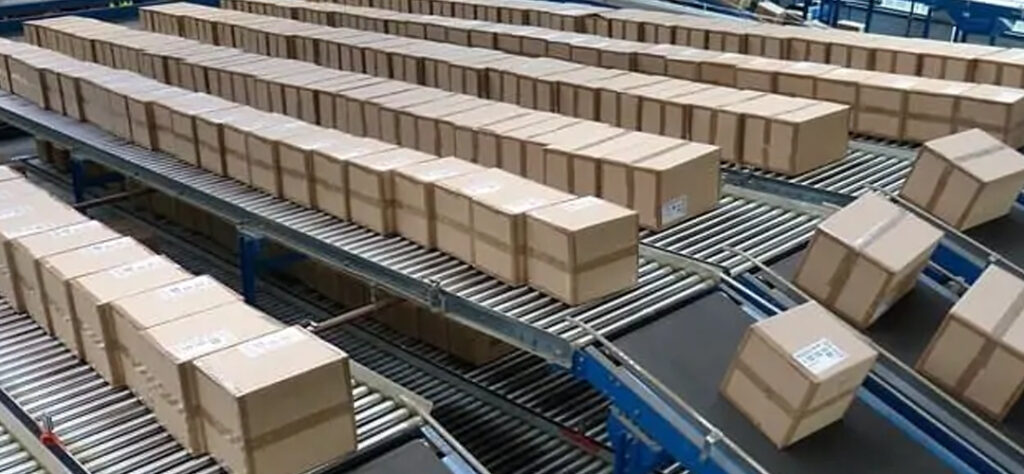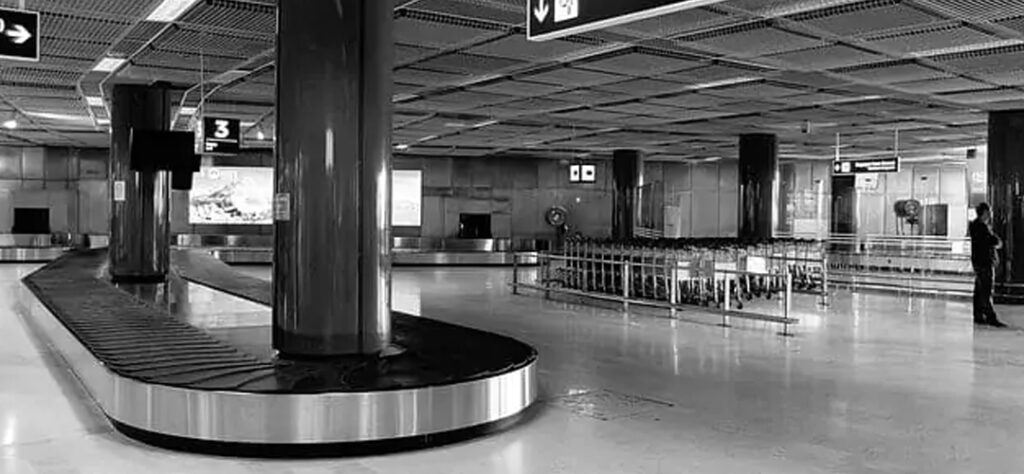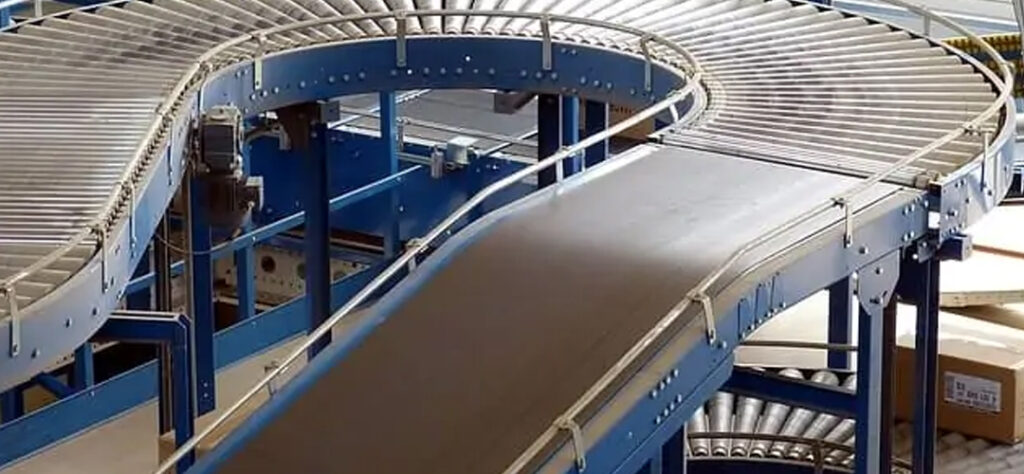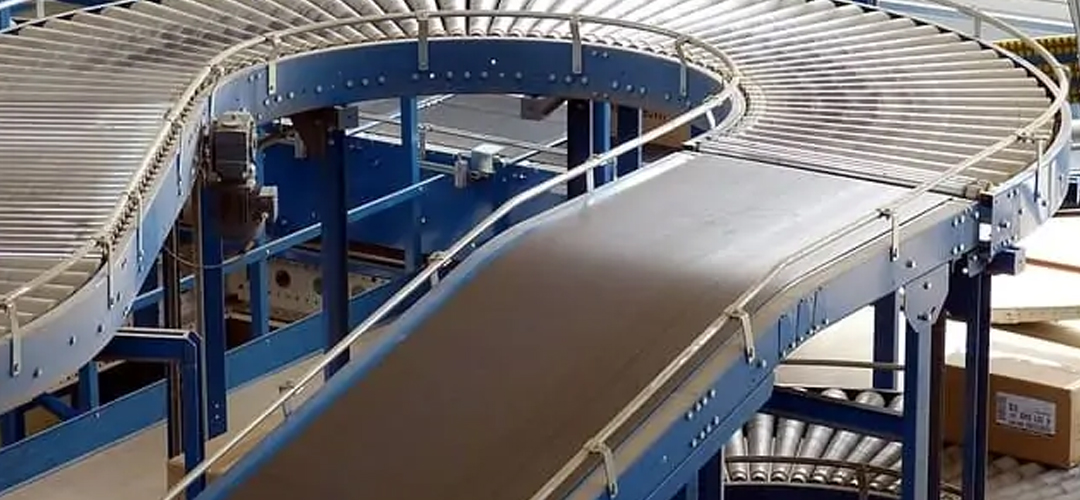What is a conveyor system? Definition and more
A conveyor system is a fast and efficient way to move loads and materials around an area without having to move them by hand. This system, among other things, reduces human error, lowers workplace risks, and lowers the cost of labor. They can help move things that are big or heavy from one place to another. A conveyor system can move things with a belt, wheels, rollers, or a chain.
How do conveyor systems work

Most conveyor systems are made up of a belt that goes over two or more pulleys. The belt wraps around the pulleys in a closed loop so that it can keep turning. One pulley, called the “drive pulley,” moves things from one place to another by pulling or driving the belt.
The most common way to power the drive pulley and belt in a conveyor system is with a rotor. The belt stays attached to the rotor because the two surfaces rub against each other. For the belt to move, both the drive pulley and the idler must move in the same direction, either clockwise or anticlockwise.
Most conveyor systems, like moving walkways and grocery store conveyors, move in a straight line. However, sometimes the unit needs to turn to get the items to the right place. For the turns, there are special cone-shaped wheels or rotors that keep the belt from getting tangled when it bends or twists.
Benefits of conveyor systems
A conveyor system’s main goal is to move things from one place to another. The design makes it possible to move things that are too big or heavy for people to carry by hand.
When moving things from one place to another, conveyor systems save time. Since they can be tilted to reach multiple levels, they make it easier to move things up and down floors, which is hard on the body when done by hand. Material on inclined belts can be unloaded automatically, so no one needs to be at the other end to take the pieces.
Types and examples of conveyor systems

You can probably picture a big warehouse full of conveyors with belts and rollers that move boxes and other heavy equipment. This is just one type of conveyor system, though. Conveyor systems can also be found in airports, where they are used to move bags. Escalators and ski lifts are two more examples. Belts, chains, and pulleys are still used in these machines to move heavy things from one place to another.
There are many types of conveyor systems, including:
- Belt
- Roller
- Slat/apron
- Ball transfer
- Overhead
- Pneumatic
- Bucket
- Chute
- Magnetic
- Vertical
- Wheel
- Walking beam
- Vibrating
- Screw/auger
- Chain
Each kind of conveyor is used for something different. For example, a slat conveyor is made of slats or plates instead of a belt and is used to move heavy materials. Most of the time, the materials moved by a slat system are too big or heavy to be moved by a belt.
A chain-driven conveyor system would be something like an escalator. The chain conveyor doesn’t have pulleys that move things along. Instead, it has a system that pulls the steps up or down.
A type of overhead conveyor is a ski lift. The chairs are pulled up or down the mountainside by an electric track with an incline. Like an escalator, these systems are pulled along by a chain.
Essential parts of a conveyor system

A conveyor system has three main parts: the support for the belt, the pulley, and the drive unit. Each part is important to the operation of the conveyor unit as a whole. Even though all conveyor systems have these parts, there are many different ways to build them and put them.
The part that makes sure the belt moves smoothly is the belt support. When workers put a heavy object on top of a belt that doesn’t have a strong support unit, the belt sags. This makes the belt not move as smoothly or quickly as it should. When a firm support unit is used, the belt stays tight and works well.
The belt movement is controlled by an outside part called the pulley system. Each unit has at least two pulleys, one that moves when power is applied and one that stays still. In the frame of a more complicated conveyor system, there may be more than one rotor.
The system can move because of the drive unit. There is a counter bearing in the unit that keeps the parts moving smoothly. This unit also lets the belt move in the opposite direction and handles the many changes in direction that some systems need to make. Some conveyor systems need to be run by hand. These systems still have a drive unit, but it doesn’t have a motor.
How to choose the right conveyor system
A conveyor is kind of like the brain of an operation that receives, handles, stores distribute, makes, or ships things. Warehouse managers and others can find it hard to choose the right conveyor system because there are so many different kinds of conveyors and so many different ways they can be set up.
Also, there are many things to think about when looking for and buying the best conveyor system for your warehouse or distribution centre. You should think about both the product and the process requirements at the same time.
First off, an ideal conveyor system must be:
- Operationally safe
- Energy efficient
- Reliable (parts and components engineered to last)
- Adaptable to changing needs
- Cost-effective (in terms of TCO, or total cost of ownership)
The improper conveyor system installed in a warehouse will soon reduce operational effectiveness, increase costs, decrease customer happiness, and eventually rob the company of its competitive advantage.
Without further ado, let’s look at the elements to take into account when assessing and choosing the best conveyor system for your organization.
Product Requirements
A conveyor system is mainly used to move things from one area of a distribution center to another. So, the design, size, and type of the conveyor system will depend on the item(s) that need to be moved.
When looking for the best conveyor system for your facility, answering the following questions will help you figure out design and configuration needs and calculate things like horsepower and belt pull for each conveyor:
- What type of product is being conveyed?
- What is the average weight per foot of the product?
- What is the maximum weight of the products?
- What are the minimum, maximum, and average dimensions of the product (i.e., length, width, and height)?
- What is the dimensional data for each product?
- How are the products being conveyed and in what orientation?
The weight, size, and fragility of the goods will all have a significant impact on your choice. The size of the items in your facility will define the conveyor width, guide rail requirements, and roller centers, whereas the weight of the products will dictate the roller gauge, roller diameter, and motor sizing needs.
Process Requirements
Process requirements cover factors governing how the conveyor should move and the unique conditions of the operating environment. These considerations include:
- The distance items need to move between functional areas
- The pathway through which it moves — are there stops, elevation changes, curves, or diversions?
- Product orientation — must items be positioned in a particular way (for easy scanning of barcodes, transfer, etc.)?
- Transfer speed — short, rapid movement or slow, steady movement?
- Ambient environment
- Available space
Flow Rate
Your conveyor system should be able to handle your facility’s average transfer rate as well as times of high demand, like when the seasons change. How many things you need to move per hour will determine how long and fast the conveyor needs to be (or per minute).
Also, different types of goods need different types of conveyors. A large plastic chain conveyor is the best way to move plastic-footed pallets, while a chain-driven roller conveyor is the best way to move wood-footed pallets. The first one is also better for moving smaller boxes or totes than the second one.
Transfer Requirements
The point where things go on and off the conveyor is a very important one. Most conveyors do this with the help of side-to-side transfers, powered transfers, dead plates, gravity rollers, etc. Products that take up less space may need a powered transfer, while products that are bigger and longer may need gravity rollers.
Your happiness is our top focus at DPH Engineering.
Contact us for more details!

